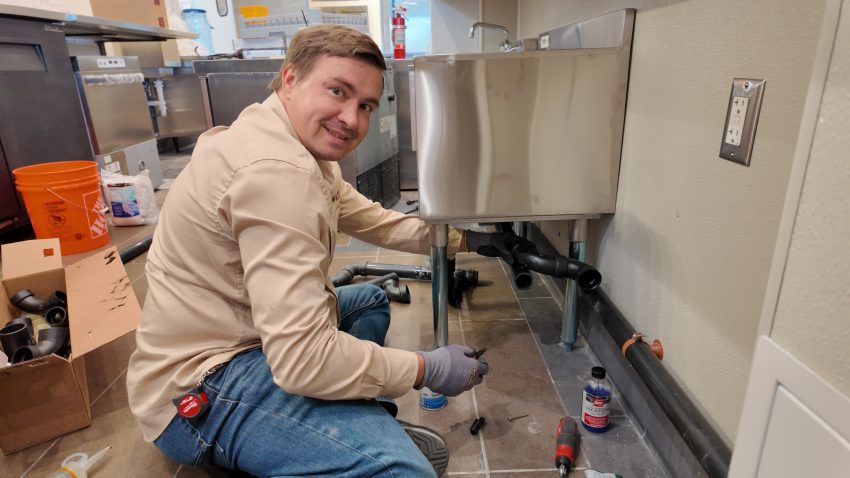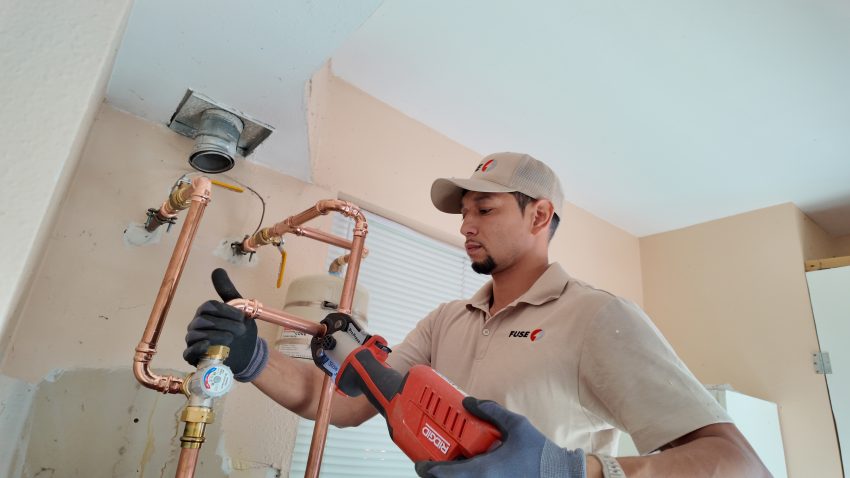What Causes a Faucet to Drip? Explore Common Issues and Fixes
Haven’t you noticed that dripping faucets are often used in thrillers and horrors? We can’t agree more, because they are right where they belong. They are driving you mad not only by the sound they make, but also by increasing your bills. And sorry to frighten you even more but it could be a sign of a serious plumbing problem. So, what causes a faucet to drip? We made this guide so you can easily understand where the issue comes from and when you can handle it yourself and when it is better to call a professional.
Understanding the Anatomy of a Faucet
Have you ever wondered what’s going on inside a faucet? Well, even if you haven’t, we will explain its construction. This might be helpful to understand where any cause of dripping faucet comes from. Most modern faucets have several key parts:
- Washers and O-Rings. These rubber parts provide a tight seal and that’s how they prevent water from seeping out of unwanted areas.
- Valve Seat. This is where the faucet meets the spout. The valve seat ensures water flows correctly, while you use the faucet.
- Cartridges or Ball Valves. These control the water flow. Cartridges or ball valves are most common in single-handle faucets. At the same time, two-handle faucets often have separate valves.
- Spout and Handles. The visible components through which water exits and where you control the water flow.
It happens that these parts can wear out or malfunction. The result is leaks or drips. Recognizing which component might be causing the issue can lead to an easier and faster fix.

Common Causes of a Dripping Faucet
What can be the cause of dripping faucet? There could be plenty. Let’s look through the most common ones and how they affect your faucet.
Worn-Out Washers and O-Rings
First in our list is worn out washers and so called o-rings. This reason is one of the most frequent. While constantly used, washers and o-rings can wear down, leading to small leaks that cause drips.
Corrosion and Mineral Buildup
Hard water isn’t a good gift for your faucet. Minerals like calcium can accumulate inside your faucet over time. And that’s leading to corrosion and blockages. Corrosion can wear down internal components, while mineral buildup obstructs water flow, and it’s what causes a dripping faucet even when it’s off.
Faulty Valve Seat
Over time, corrosion and mineral buildup on the valve seat can cause water to seep through. And that’s another reason for dripping. This issue is more common in older faucets and those exposed to high levels of minerals in the water.
Loose Parts and Components
Loose parts inside the faucet can also lead to leaks. All nuts, screws and other connectors in time can dislodge. Even a slightly loose washer or valve can allow water to escape, leading to a drip.
How to Identify the Cause of Your Dripping Faucet
It’s actually not that hard. Almost all dripping faucet causes are really easy to detect. Sometimes all you need is to check your faucet.
- Check the Handles. Just tighten each handle and observe if the dripping stops.
- Inspect the Base. A leak at the base could indicate a problem with the O-ring or valve seat.
- Look for Mineral Deposits. You might notice some mineral deposits around your spout or handles. If so, it could be mineral buildups.
Testing these parts can often reveal the problem quickly and find out what causes a faucet to drip. However, if you’re unsure or the leak persists, it might be time to consult a professional.
What Can Happen If You Ignore a Dripping Faucet?
If you think that dripping faucet is a minor inconvenience, we are here to prove you wrong.
- Higher Water Bills. A single drip can waste up to 3,000 gallons of water annually. Sounds expensive for us…
- Corrosion and Damage. Continuous water exposure can corrode parts and cause structural damage.
- Risk of Mold and Mildew. Prolonged leaks create the perfect environment for mold growth, potentially harming indoor air quality.
Leaving a drip unattended can make a simple fix evolve into a major repair or replacement, which is why it’s best to address the issue early.
Quick Fixes for Common Faucet Drips
For many faucet drips, you can try a few quick fixes before calling in a professional.
- Replace Washers and O-Rings. Many faucet drips are due to worn rubber parts. Replace it and there are high chances that leaks will stop.
- Clean Mineral Deposits. A simple vinegar is a great instrument to dissolve mineral buildup around the spout and handle.
- Tighten Loose Parts. Secure any loose screws or nuts within the faucet.
These quick steps can often resolve minor drips. However, if you’re dealing with a more complex issue, it might be time to call a plumber.
Preventing Future Faucet Drips
When we are done with what causes dripping faucet, let’s talk about your faucet future. Simple preventive steps can save you from future hassles and repair costs. Here are some simple tips to keep your faucet in top shape.
- Install a Water Softener. It will help you to avoid mineral build ups especially if you live in an area with hard water. This will definitely extend the life of your faucet components.
- Regular Cleaning. Clean the faucet regularly to remove dirt and debris that may cause wear on the washers or O-rings.
- Check for Loose Parts Periodically. Tighten any loose screws, nuts, or handles as part of your maintenance routine.
Following these steps can reduce the likelihood of future drips and keep your faucet in optimal condition.

When to Call a Plumber for a Dripping Faucet
Sometimes little drips are signs of serious problems. If you tried everything above and nothing works, it’s time to call the professionals. Issues like broken valve seats can require advanced tools or expertise to fix properly. Plumber can make it clear what your faucet needs and how to fix it. Also plumber will prevent any potential damage to your plumbing system.
Need a reliable plumber in San Jose? Get in touch with a professional here.
Conclusion
Small issues can lead to horrifying consequences. Faucet dripping only seems like a small problem but leaving it without care could result in high spendings. But with understanding what and where any cause of dripping faucet comes from you can often easily fix it. In other cases there is a plumber who definitely can.
Simple preventive steps and caring for your faucet will extend its life. Remember, a small drip might seem harmless, but over time, it can lead to unexpected costs. Taking action now can help you avoid these pitfalls and maintain a functioning, efficient plumbing system.
For more plumbing tips and solutions, feel free to contact us!


